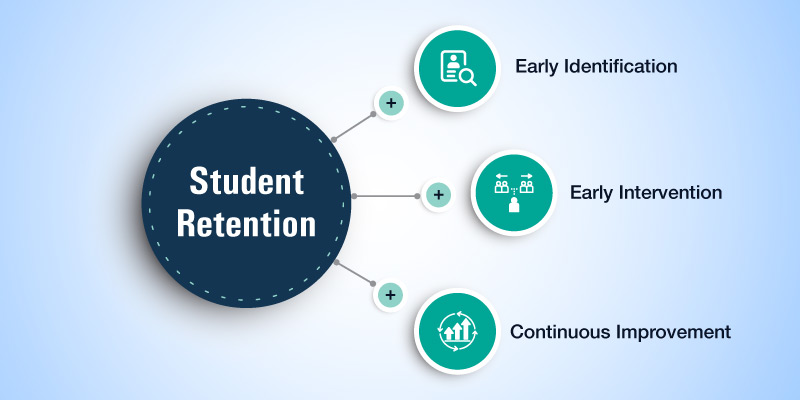The student attrition problem has become a major concern for both public and private universities. According to the National Center for Education Statistics (NCES), about 59% of the first-time and full-time students seeking admission in four-year courses finished in 6 years. The graduation rate of females was 61%, only marginally higher than the 56% for males. Raising graduation rates has become a critical issue to be addressed to insure both student and institutional success. There is a growing need to facilitate student retention strategies among higher education institutions.
Definition of Student Retention
Student retention is a carefully laid process to ensure student(s) success through till graduation. To see a huge number of students drop out of their higher education is definitely a sorry state for students, institutions, and to the family that supports them. It can be prevented early by applying a simple formula as below;
Student Retention = early identification + early intervention + continuous improvement

Student Retention strategies in higher education
Lifecycle CRM (Constituent Relationship Management) systems can be one of the best student retention strategies to adopt. They enable schools to connect with their students during their entire lifecycle, from prospects to enrolled students to alumni. The Enrollment module in these systems streamlines the process of nurturing prospects and converting them into enrollments. The Student Success module provides tools to engage with enrolled students and provide them with the resources they need to successfully complete their program.
How to improve student retention?
The process of maximizing the success of enrolled students can be summarized as the “Three I’s”:
1. Identify
At-risk students can be identified by using a variety of general and college-specific parameters: absenteeism, low grades, behavior changes as observed by professors, etc. A student lifecycle CRM can deliver a ‘data analytics-driven’ approach to highlight these early warning signals, drawing from a number of systems and data sources within the institution. ‘Red flags’ are assigned to students who are identified as highly at risk of failure, allowing the college to take timely corrective measures.
2. Intervene
Effective intervention with at-risk students can increase course completion rates, retention, academic performance, and overall student success. A CRM can help create personalized intervention strategies for individual students. Outcomes from these interventions can be tracked and documented for use with other students in similar situations. And timeliness is important – the earlier the intervention, the greater the chance of success.
3. Improve
Once individual interventions are complete, it is important for the college to use the learnings from them to improve their processes. CRM systems can provide tools that allow the institution to increase the accuracy of at-risk indicators by integrating the learnings of previous interventions.
By following the “Three I’s”, schools can help maximize the success of their students, and ultimately of the school itself.
Schedule a quick discussion with our team to see how e2s Retain can help you.


COMMENTS